WHAT’S THE DIFFERENCE BETWEEN INCLUSIONS AND BLEMISHES?
DEFINITION OF DIAMOND INCLUSIONS AND DIAMOND BLEMISHES
This post contains affiliate links. If you use these links to buy something I may earn a commission. Thanks! As an Amazon Associate I also earn from qualifying purchases.
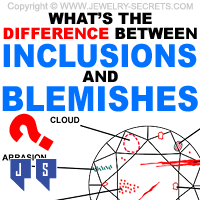
You always hear the terms ‘inclusions‘ and ‘blemishes‘ when talking about clarity.
What are they?
What’s the difference?
The difference is where they reside.
You see, inclusions are internal; flaws inside of the diamond (like internal organs). And blemishes are a mark upon the surface (like a blemish upon your skin).
These are all imperfections or flaws that affect the clarity grade of a diamond.
And pretty much any diamond clarity can have both. Even a flawless diamond can still have a natural on the girdle (blemish).
Look at the list below, to see what’s considered an inclusion, and what’s a blemish.
Inclusions:
Carbon – Usually black spots that look like pepper. Some are small, others are massive in size and quite noticeable (as seen in I clarity diamonds).
Feather – A cracking inside of the diamond that resembles a feather, frayed with a jagged edge.
Crystal – White spots in the diamond, usually caused by diamond crystals forming differently upon creation billions of years ago.
Pinpoints – Tiny little spots, like a needle hole, poked around the diamond like dot-to-dot.
Clouds – Groupings of pinpoints or crystals that make the area look white, foggy or hazy.
Blemishes:
Chips – A small missing piece of the diamond that can be caused by the diamond cutter, a jeweler’s pliers, or striking the edge of your diamond against something hard.
Scratch – A thin abrasion that looks like a scratch upon the surface.
Fracture – A crack upon the surface that’s normally caused by a hard blow or an internal inclusion that runs out of the stone (quite often found in I2 and I3 clarity diamonds).
Polishing Lines – Soft fine lines that are made by the polishing wheels upon cutting the facets (when you go against the grain).
Naturals – Rough areas on the diamond that are unpolished, like a knot in a tree.
Extra Facets – Additional facets that were added to the diamond to remove an unsightly flaws that lay on or close to the surface of the stone.
Bearded Girdle – Small hairline chips that go around the edge of your diamond, caused by years and years of wear and tear (a lot of antique diamonds have bearding).
Viewing your flaws:
All of the inclusions and blemishes listed above are the more common flaws (others are shown below). They can be viewed under a 10x jeweler’s loupe, or a microscope (10x is the power used to grade diamond clarity).
These flaws are also listed on a diamond report, like the GIA full diamond report shown below:
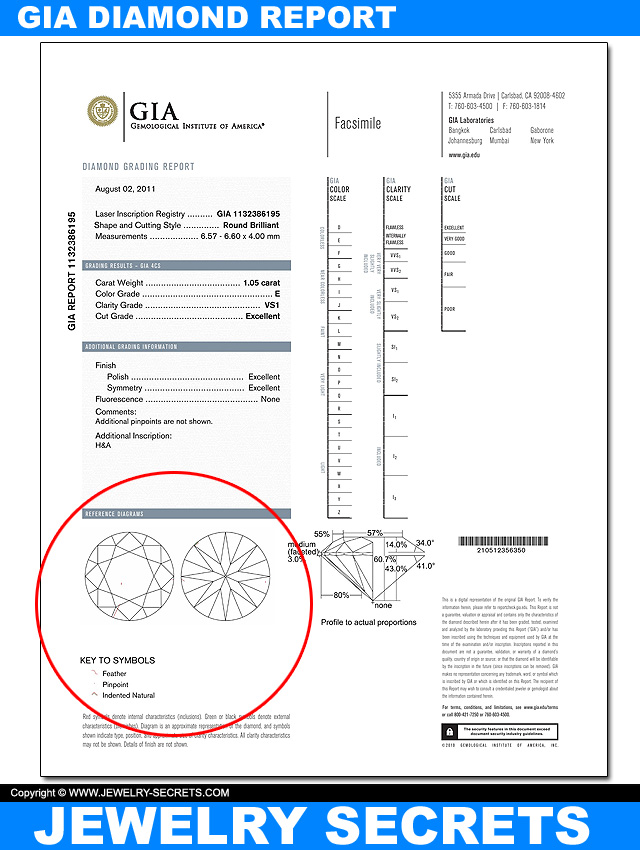
(Learn how to read an entire GIA diamond report).
A close-up of the diamond plot:
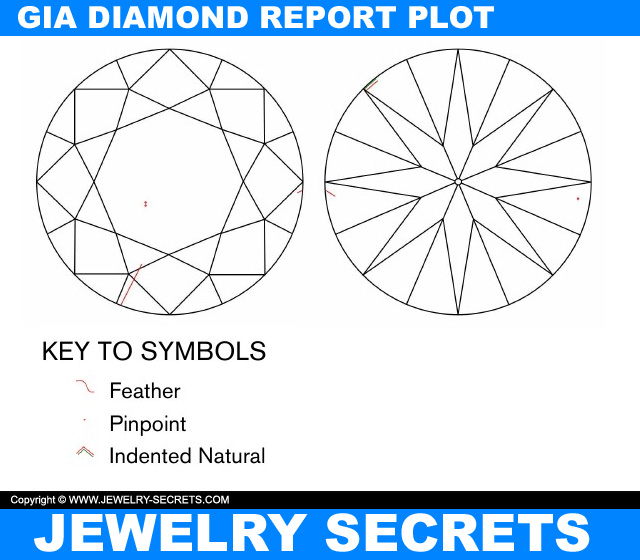
Those two diagrams are the top view and bottom view of the diamond being graded. And as you can see, some inclusions or blemishes only seen in certain viewing positions (like SI2 clarity flaws are usually seen best when viewed from the side).
GIA has specific symbols for all of their inclusions and blemishes, as shown below:
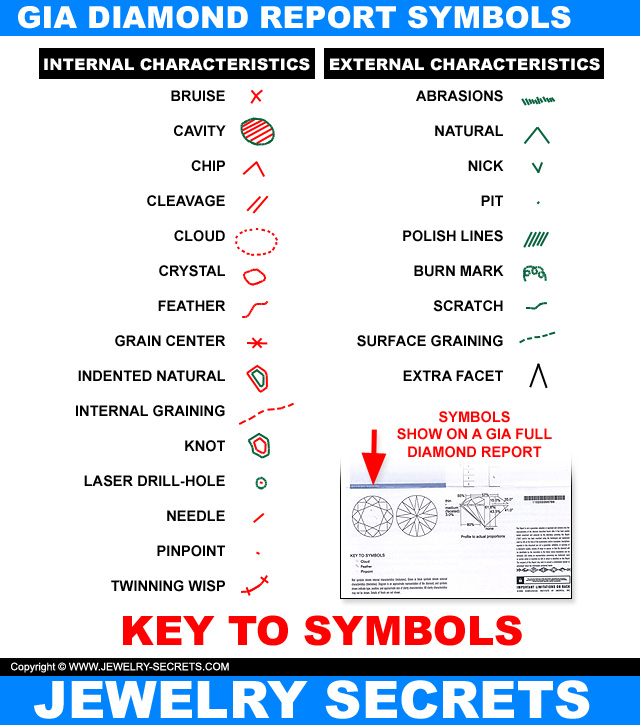
The important thing to note about flaws is this; almost every diamond has them. These flaws they don’t really make a diamond good or bad, they are just another way of identifying the diamond (like a fingerprint). Each diamond is unique and different in nature.
Generally, most people prefer not to see these flaws (especially big black flaws) with their own eyes. This is why SI1 clarity diamonds are the most popular clarity there is. It’s a good combination of a great looking diamond, where all of the flaws are only seen with a loupe or a microscope, and the price is right (affordable).
You can put an SI1 clarity diamond up against a flawless clarity (FL – the highest clarity on Earth), and they will look alike. You will see no difference with the eye, unless you use 10x magnification.
So SI1 is a win-win!
They look wonderful, and they saves you thousands of dollars versus buying a much higher clarity.
Just like these SI1 clarity diamonds here:
That way, your inclusions and blemishes are sight unseen (unless magnified).
Check out more SI1 clarity diamonds here at James Allen or Blue Nile here.
Cheers! :)


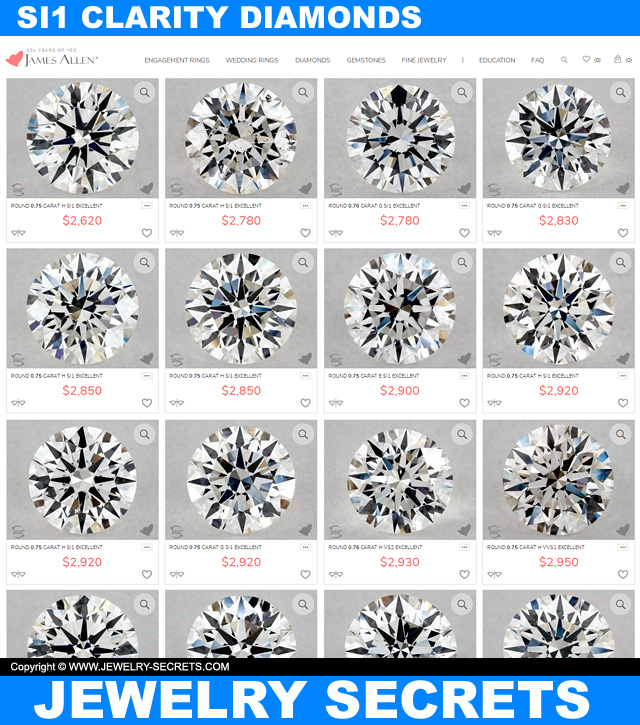
















Leave a comment